"건축은 빛과 그림자의 지혜로운 놀이이다." - 르 코르뷔지에
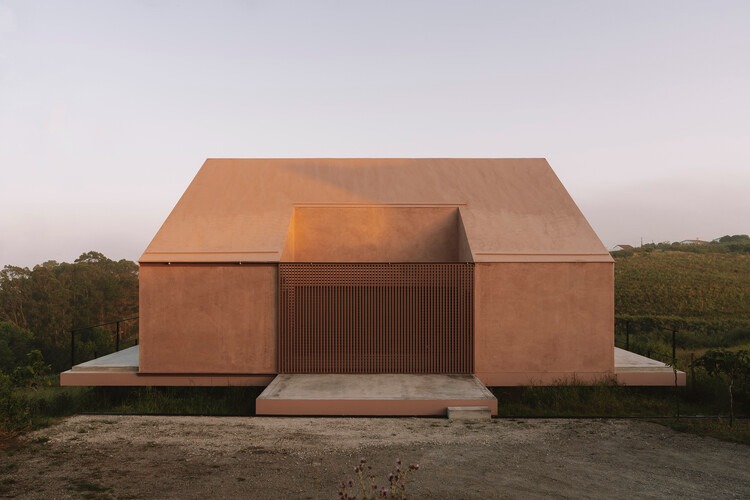
바다를 품은 십자형 기단 위의 집 extrastudio-Plaj House
발견과 대지: 포르투갈 해안의 작은 땅
클라이언트들은 포르투갈을 여행하던 중 우연히 바다 근처의 작은 땅을 발견했다. 리스본에서 북쪽으로 한 시간 거리에 위치한 로우리냐(Lourinhã)는 포르투갈의 과일 생산 중심지로 알려져 있으며, 세계 최고의 서핑 스팟인 에리세이라(Ericeira)와 페니세(Peniche)와 가까운 곳이다.
이 땅은 시골 한복판에 있는 가파르고 좁은 띠 모양의 부지로, 해변까지 걸어서 5분 거리에 있으며 바다와 계곡, 그리고 멀리 마을까지 파노라마 전망을 제공한다. 로우리냐는 부유한 지역이 아니다. 건물들은 소박하고 단순하며, 최근 수십 년간의 건축물들이 잊어버린 방식으로 자연스럽게 풍경 속에 자리 잡고 있다.
설계 철학: 자유로운 실험과 급진적 단순함
일상의 의무에서 벗어난 휴양주택은 어느 정도의 자유와 실험을 허용한다. 그러한 집은 관대하고 격식 없으며, 물리적으로 존재감이 있어야 하고, 자신만의 시간과 리듬을 부과해야 한다. 건축가들은 이 집을 위해 급진적으로 단순한 형태를 만들고자 했다. 역사적 지역 건축물에서 사용된 요소들을 현재에만 가능한 방식으로 결합했다.
지형과의 관계가 근본적이었다. 집은 가능한 한 가볍게 대지에 닿아, 기존 지형이 아래로 흘러가도록 허용한다. 네 개의 내력벽이 십자형 기단을 지지하고, 그 위에 집이 앉아 땅 위에 부유한다.
구조 해결책: 십자형 기단과 부유하는 테라스
기단은 진입을 위해 경사진 땅과 한 번만 만나고, 다른 모든 면에서는 공중에 떠 있는 테라스들을 수용한다. 이 테라스들은 모든 방향으로 뻗어나가 내부 공간을 외부로 확장하며, 각 방에 고유한 개인적 피난처를 제공한다.
집의 견고한 형태에서 빈 공간을 잘라내어 개방형 안마당 입구를 만들고, 큰 미끄럼문으로 둘러싸았다. 한 층으로 구성된 이 집에서 주방, 식당, 거실은 관대한 공간을 공유하며, 북쪽, 동쪽, 서쪽으로 대칭적으로 열려있고, 세 개의 침실은 남쪽을 향한다.
공간과 빛: 예상치 못한 장엄함
최대 실내 면적 120제곱미터로 제한된 상황에서, 내부는 볼륨의 높이를 최대한 활용하여 작은 면적을 보상하고 예상치 못한 웅장함과 스케일감을 조성한다. 거실의 큰 천창이 이러한 인상을 강화하며, 다른 곳에서는 구조의 기하학 내에서 3D 모델을 사용해 정밀하게 설계된 일련의 원형 개구부들이 천창에서 오는 직접적인 빛이 집을 관통하여 가장 어두운 영역까지 도달하도록 한다.
일 년 중 네 달 동안, 빛줄기가 일몰 전 각 방을 비추며, 하지와 동지에 최고 강도에 도달한다. 단순한 건축적 장치들이 유연성과 격식 없음을 가능하게 하고 장려한다.
재료와 디테일: 시간과 우연의 흔적
창문들은 벽 안으로 완전히 들어가서 집을 큰 야외형 공간으로 변화시키고, 실내를 외부로 확장하며 목욕과 같은 순간들을 야외 경험으로 만든다. 시공 중 클라이언트와 시공자 간의 긴밀한 대화를 통해 시간과 우연, 그리고 작업자들의 지식이 집에 흔적을 남길 수 있었다.
회색 회반죽 벽은 그대로 남겨져 단색의 내부를 만들었다. 가능한 곳에 새로운 현창과 벽감이 추가되었고, 계단실의 강철문은 빨간 유리로 교체되었으며, 이란산 은색 트래버틴과 푸른빛이 도는 녹색 대리석이 내부 벽과 어울리도록 선택되었다. 회색으로 의도되었던 외부는 결국 색을 얻었다.
외부와 체험: 자연과의 조화
외부에는 야생 소나무들 사이로 바다와 평행하게 긴 수영장이 자리한다. 풍경은 거의 건드리지 않았다. 모든 기존 나무들이 보존되었고, 주변의 농업적 특성을 유지하기 위해 경사면에 과일나무 격자가 심어졌다.
완공 후 클라이언트들이 건축가들을 이 집에 머물도록 초대했다. 공기 중에는 해안으로 부서지는 파도 소리와 계곡 저편에서 들려오는 목소리만이 들렸다. 밤에는 알지 못하는 새들이 지저귀었고, 근처 개울가의 개구리 울음소리가 동반했다.
이 집은 한국의 전통 한옥이 마당을 중심으로 자연과 조화를 이루듯, 십자형 기단을 통해 포르투갈의 거친 해안 풍경과 하나가 되는 현대적 해석을 보여준다. 대지를 최소한으로 건드리면서도 최대한의 공간적 경험을 제공하는 이 주택은, 건축이 자연과 맺는 관계에 대한 새로운 가능성을 제시한다.
Write by Claude & Jean Browwn
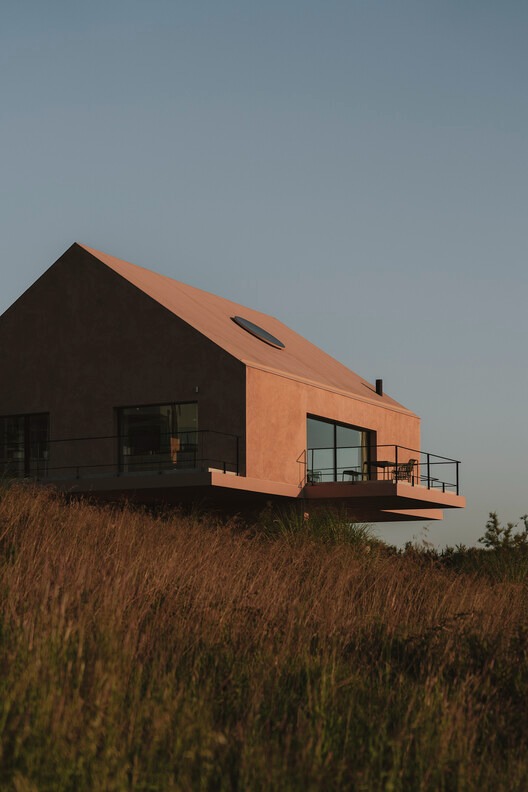



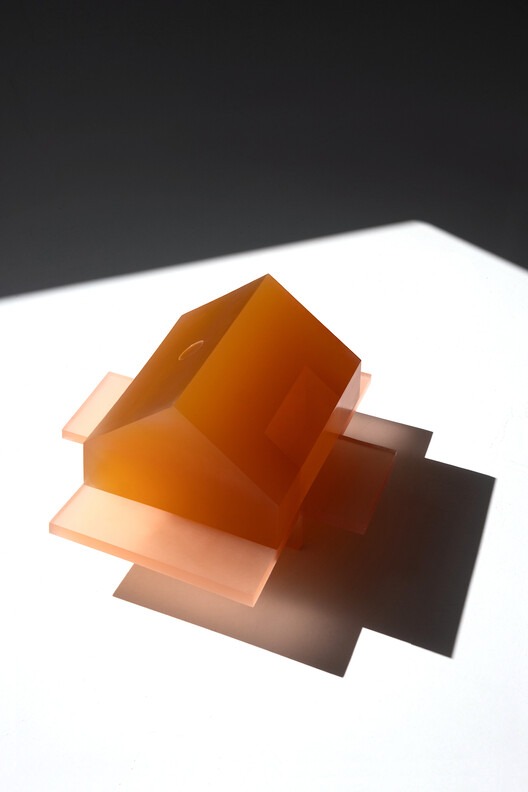




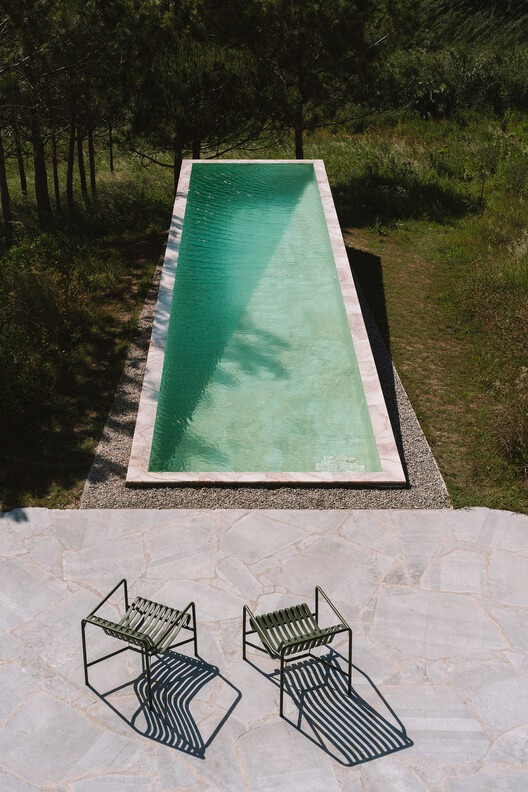
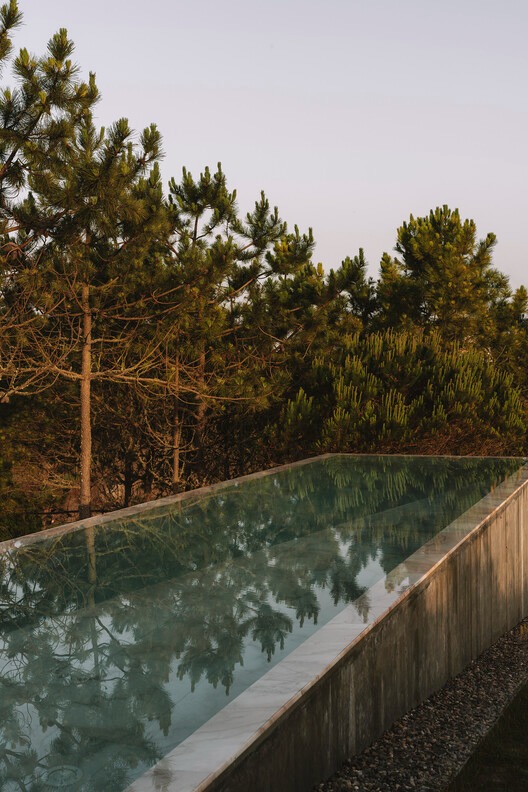

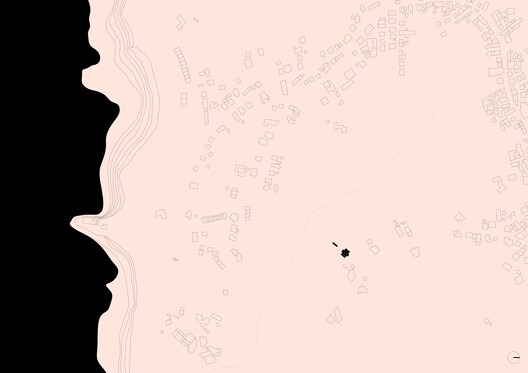





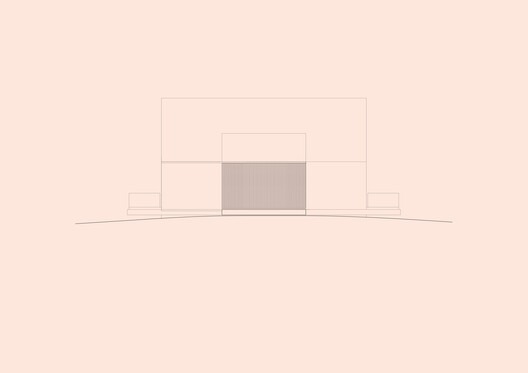
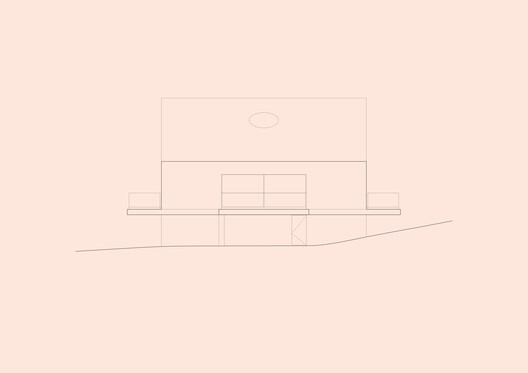
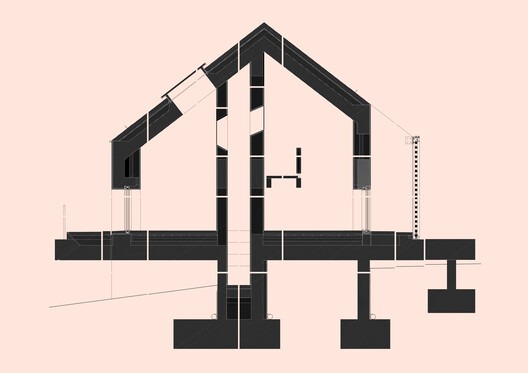
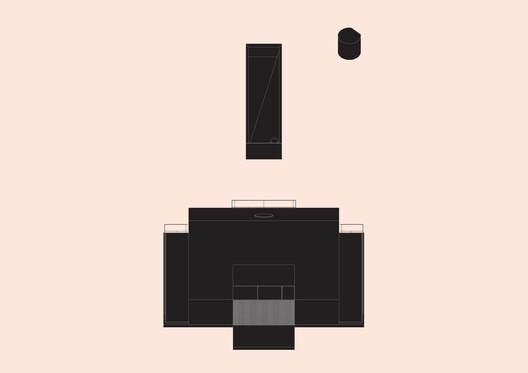
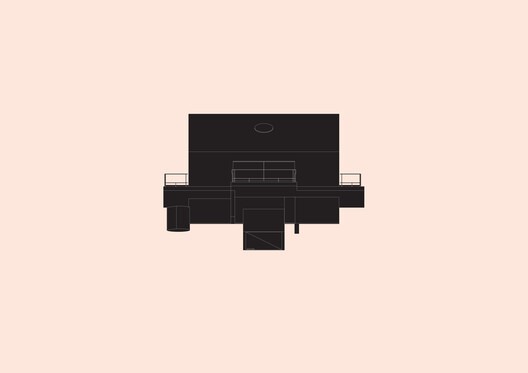
Our clients were on a trip through Portugal when they stumbled upon a small piece of land for sale by the sea, close to a village situated about one hour north of Lisbon. Lourinhã is known as the country's center for fruit production, and for its proximity to Ericeira and Peniche, two of the world's best surfing spots.
The plot, a steep, narrow strip of land in the heart of the countryside, is a five minute walk from the beach, and offers panoramic views over the sea, the valley, and the village in the distance. Lourinhã has never been a wealthy area; buildings are modest and simple, and sit naturally in the landscape, in a way that has somehow been forgotten by buildings from recent decades. Free from daily obligations, a holiday house allows a certain level of freedom and experimentation. It should be generous, informal, physically present, imposing its own time and pace. We wanted to make a radically simple form for this house, combining elements used in historic local buildings in a way that is only possible in the present.
The relationship with topography was fundamental: the house touches the ground as lightly as possible, allowing the existing terrain to flow below. Four load bearing walls support a cruciform podium, onto which the house sits, hovering over the land. The platform touches the sloping ground once only to allow entry, while all other sides accommodate terraces that float in the air in all directions and that extend interior space to the outside, giving each room its own private refuge. A void is cut from the solid form of the house to make an open-air courtyard entrance, enclosed by a large, sliding gate. Organised on one level, kitchen, dining, and living share a generous space, which opens symmetrically to north, east, and west, while the three bedrooms face south.
Restricted to a maximum enclosed area of 120m2, the interior compensates for the small footprint by taking full advantage of the volume's height, creating an unexpected sense of grandeur and scale. A large skylight reinforces this impression in the living room, while elsewhere a series of oculi, designed precisely within the structure's geometry using a 3D model, allow direct light from the skylight to cut through the house, reaching its darkest areas. For four months of the year, a beam of light illuminates each room before sunset, reaching peak intensity at the summer and winter solstices.
Simple architectural devices enable and encourage flexibility and informality. The windows recede completely into the walls, transforming the house into a large alfresco space, extending the indoors outdoors and allowing moments like bathing to become open air experiences. Close dialogue between the clients and builder during construction allowed time, chance and workers' knowledge to leave their marks on the house. Grey plastered walls were left bare, making a monochrome interior. New portholes and niches were added where possible, a steel door in the stairwell was replaced with red glass, Iranian silver travertine and blueish-green marble were chosen to match the interior walls, and the exterior, intended to be grey, finally gained colour.
Outside, a long swimming pool stands among wild pine trees, parallel to the sea. The landscape was barely touched. All existing trees were retained and a grid of fruit trees was planted on the slopes, to preserve the agricultural character of the surroundings. Our clients invited us to stay at the house after its completion. The only sounds in the air were the waves breaking onto the shore and voices from the far side of the valley. At night, birds we did not know warbled, and croaking frogs from a nearby creek kept us company.
from archdaily